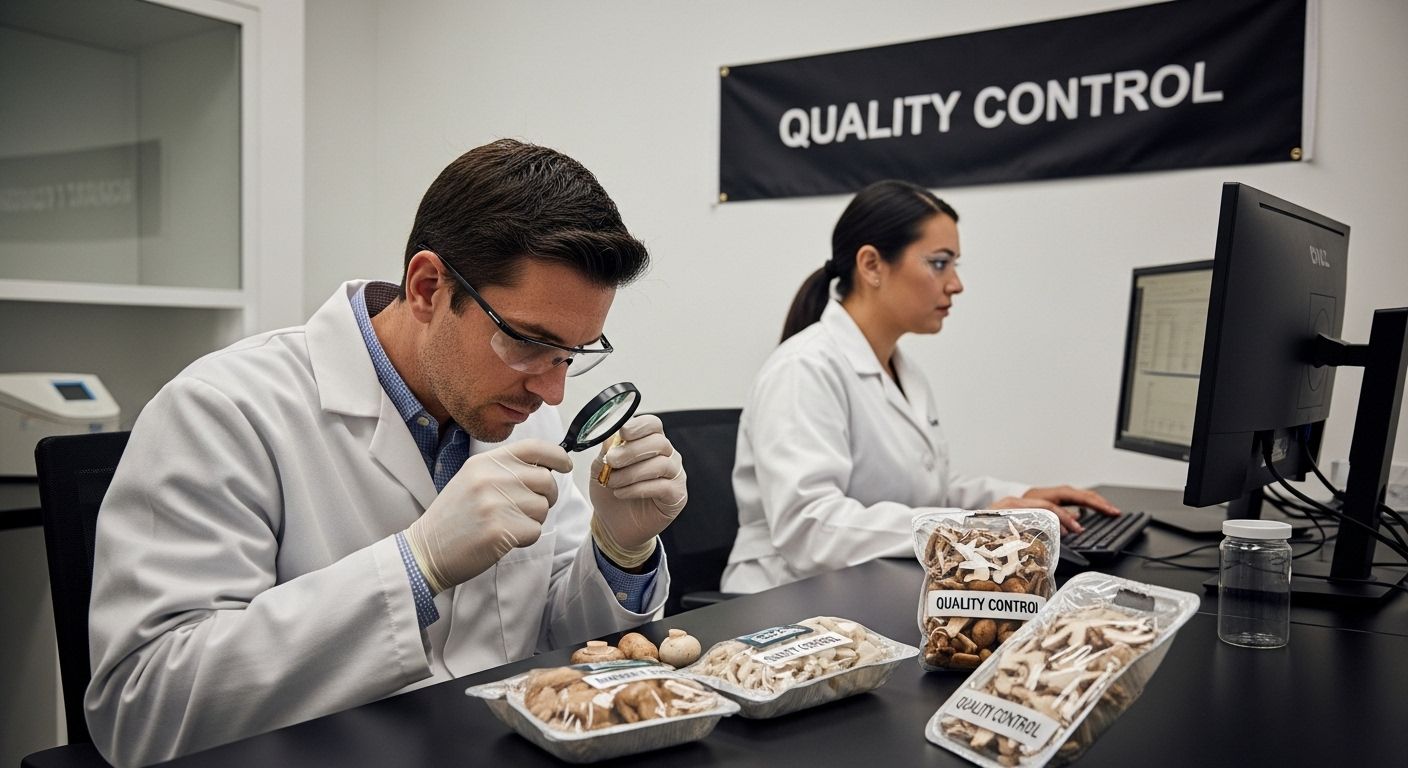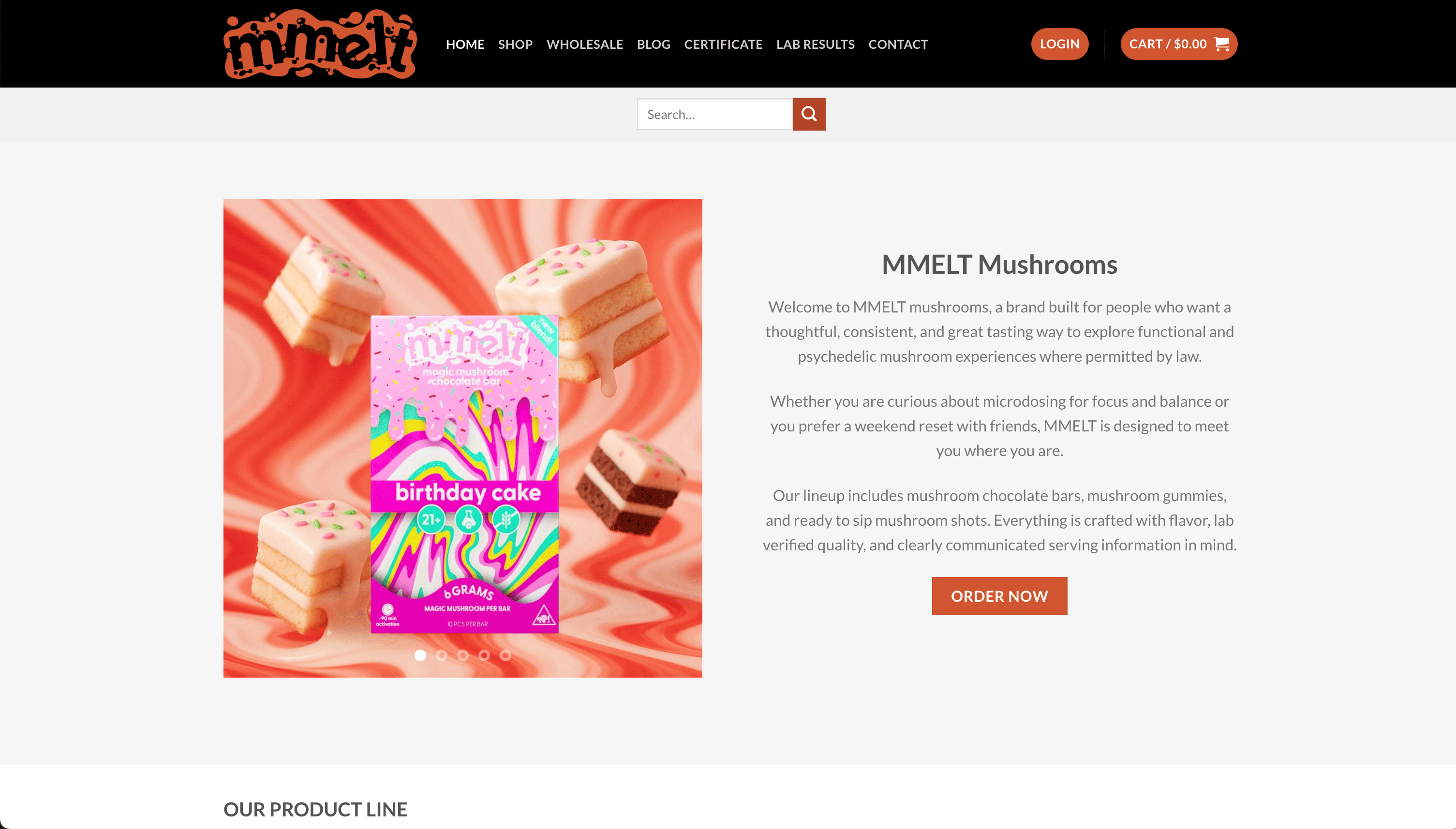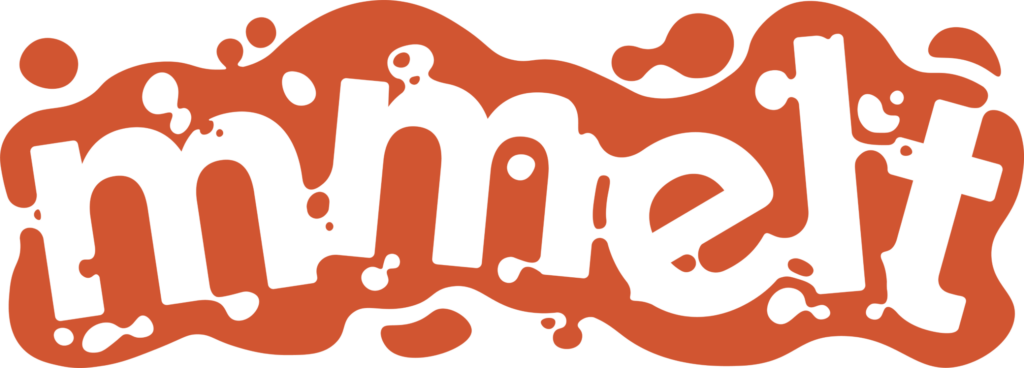Blog
Understanding Mushroom Edible Safety for Consumers
Edible mushrooms are popping up everywhere from chef kitchens to wellness blogs. It might surprise you that some mushrooms carry unique compounds that can fight harmful microbes and help the immune system stay strong. Yet danger can hide in plain sight, because a single mistake in picking or preparing the wrong mushroom could mean serious health risks instead of a nutritional boost.
Table of Contents
- What Are Edible Mushrooms And Their Benefits?
- Why Mushroom Edible Safety Matters To Consumers
- How To Identify Safe Vs. Toxic Mushrooms
- Understanding The Risks Of Contaminated Mushrooms
- The Role Of Regulations In Ensuring Mushroom Safety
Quick Summary
| Takeaway | Explanation |
|---|---|
| Edible mushrooms are nutrient-dense foods | They’re low in calories and fat while high in proteins, vitamins, and essential minerals that support overall health. |
| Proper identification of mushrooms is crucial | Misidentifying mushrooms can lead to severe health issues; professional verification is recommended for safety. |
| Safety protocols prevent mushroom contamination | Rigorous testing and quality control during cultivation and processing mitigate risks from harmful substances. |
| Regular mushroom consumption supports health | They may enhance immune function, cognitive health, and contribute to cardiovascular wellness. |
| Education on mushroom varieties ensures safe consumption | Understanding mushroom properties and risks helps prevent health complications and improves informed choices. |
What Are Edible Mushrooms and Their Benefits?
Edible mushrooms represent a fascinating category of nutritional powerhouses that go far beyond simple food items. These fascinating organisms are actually fungi that are safe and beneficial for human consumption, offering an extraordinary range of health advantages and culinary experiences.
Nutritional Composition of Edible Mushrooms
According to Harvard T.H. Chan School of Public Health, edible mushrooms are remarkably nutrient-dense foods packed with unique compounds. They deliver an impressive array of nutritional benefits that make them stand out in the dietary landscape:
- Low in calories and fat
- Rich in proteins and dietary fibers
- Excellent source of B vitamins
- Contains essential minerals like selenium and potassium
These fungi are not just food but powerful contributors to human health, containing bioactive compounds with potential antimicrobial, antioxidant, and anti-inflammatory properties.
Health Benefits and Functional Properties
Beyond basic nutrition, edible mushrooms offer sophisticated health advantages. Their complex molecular structures provide potential protective mechanisms against various health challenges. Research indicates they can support immune function, potentially help manage oxidative stress, and contribute to overall wellness.
For those interested in exploring more about functional mushroom products, our guide on MMELT Mushroom Shots provides additional insights into how these remarkable fungi can be integrated into daily wellness routines.
Scientific studies suggest that regular consumption of edible mushrooms might offer protective effects for cardiovascular health, support cognitive function, and provide a natural approach to enhancing nutritional intake.
Below is a table summarizing the nutritional components and health benefits of edible mushrooms, helping readers quickly compare their functional properties.
| Nutritional Component / Benefit | Description |
|---|---|
| Low in Calories and Fat | Suitable for weight management and low-calorie diets |
| Protein and Dietary Fiber | Supports muscle repair, satiety, and digestive health |
| B Vitamins | Contributes to energy production and nervous system function |
| Essential Minerals (Selenium, Potassium) | Supports heart health, antioxidant defenses, and electrolyte balance |
| Antioxidant and Anti-inflammatory Compounds | May protect against oxidative stress and reduce inflammation |
| Supports Immune Function | Contains bioactive molecules that help strengthen immunity |
| Cardiovascular and Cognitive Support | Research suggests benefits for heart health and cognitive performance |
Whether consumed fresh, dried, or in specialized product formats, edible mushrooms represent a sophisticated nutritional strategy that bridges traditional dietary practices with modern scientific understanding of functional foods.
Why Mushroom Edible Safety Matters to Consumers
Mushroom edible safety is a critical consideration for consumers who want to explore the fascinating world of functional and culinary mushrooms. Understanding potential risks and implementing proper safety protocols can prevent serious health complications and ensure a positive experience with these remarkable organisms.
Potential Health Risks of Improper Mushroom Consumption
According to research published in medical journals, consuming improperly identified or processed mushrooms can lead to severe health consequences. Potential adverse effects include:
- Liver failure
- Kidney damage
- Neurological complications
- Gastrointestinal distress
- Seizures
- Cardiac irregularities
These risks underscore the importance of careful mushroom selection and preparation. Not all mushrooms are safe for human consumption, and even traditionally edible species can become toxic under certain conditions.
Verification and Quality Control Strategies
Consumers must adopt rigorous strategies to ensure mushroom safety. This involves understanding sourcing, processing methods, and verification techniques. Our MMELT Mushroom Gummies represent an example of professionally processed mushroom products that prioritize consumer safety through strict quality control.
Key safety considerations include purchasing from reputable sources, understanding mushroom species characteristics, and being aware of potential cross-contamination risks. Professional laboratory testing can provide additional assurance by screening for harmful compounds, heavy metals, and potential microbial contamination.
Beyond immediate health risks, responsible mushroom consumption requires ongoing education and awareness. Consumers should remain informed about different mushroom varieties, their unique properties, and potential interactions with medications or existing health conditions.
The world of edible mushrooms offers incredible potential for nutrition and wellness. However, this potential can only be realized through a commitment to safety, informed choices, and respect for the complex nature of these extraordinary fungi.
How to Identify Safe vs. Toxic Mushrooms
Identifying safe mushrooms requires a systematic approach that combines scientific knowledge, careful observation, and professional expertise. Consumers must understand that mushroom identification is a complex process that demands precision and caution.
Visual Identification Characteristics
According to mycological research, reliable mushroom identification involves examining multiple physical attributes:
- Cap shape, color, and texture
- Stem structure and appearance
- Gill or pore configuration underneath the cap
- Spore color and pattern
- Overall growth environment and substrate
Critical warning: Never consume a mushroom solely based on visual identification. Professional verification is essential for ensuring safety.
Expert Verification and Testing Methods
Professional mushroom experts utilize advanced techniques to differentiate between safe and toxic species. These methods include microscopic spore analysis, chemical testing, and comprehensive taxonomic classification. For consumers seeking a safer alternative, our MMELT Mushroom Chocolate provides professionally processed and laboratory-tested mushroom products.
Key safety strategies include consulting multiple expert references, using specialized identification guides, and understanding that even experienced foragers can make dangerous mistakes. Some mushroom species can look nearly identical but have drastically different toxicity levels.
Consumers should recognize that wild mushroom foraging requires extensive training. Toxic mushrooms can cause severe health complications, including liver failure, kidney damage, and neurological disorders. The risk of misidentification makes professional sourcing and laboratory testing crucial for safe consumption.
This table outlines key differences between safe and toxic mushrooms to assist readers in understanding why accurate identification is necessary.
| Feature | Safe Edible Mushrooms | Toxic Mushrooms |
|---|---|---|
| Visual Appearance | Diverse; familiar species often cultivated | Many resemble edible types; can be nearly identical |
| Consumption Risk | Safe when properly identified, sourced, and prepared | Can cause severe illness or death if misidentified |
| Health Impact | Supports nutrition and wellness | May result in liver, kidney, or neurological damage |
| Identification Requirements | Professional sourcing and knowledge | Requires expert verification; visual confusion is common |
| Recommended Approach | Buy from trusted sources, check testing | Avoid wild foraging unless expertly trained |
Ultimately, the safest approach is to purchase mushrooms from reputable sources that provide transparent testing results and clear product information. Professional processing and rigorous quality control represent the most reliable method for enjoying the nutritional and functional benefits of mushrooms without compromising personal health.
![]()

Understanding the Risks of Contaminated Mushrooms
Contaminated mushrooms represent a significant health hazard that extends far beyond simple food safety concerns. These potentially dangerous organisms can harbor multiple types of harmful substances that pose serious risks to consumer health.
Types of Mushroom Contamination
According to research in environmental health studies, mushroom contamination can occur through several critical pathways:
- Chemical contaminants like heavy metals
- Biological agents including harmful bacteria
- Pesticide residues
- Environmental pollutants
- Microbial toxins
Critical contamination factors involve the mushroom’s growth environment, harvesting techniques, processing methods, and storage conditions. Each stage presents potential risks that can compromise the safety and quality of mushroom products.
The following table lists types of mushroom contamination and corresponding prevention strategies, providing a concise overview of consumer and industry best practices.
| Type of Contamination | Description | Prevention Strategy |
|---|---|---|
| Chemical (Heavy Metals) | Accumulation from soil or environment | Controlled environments and regular testing |
| Biological (Bacteria) | Harmful microorganisms during growth/handling | Hygiene standards and microbial screening |
| Pesticide Residues | Residues from agricultural chemicals | Limiting pesticide use and monitoring levels |
| Environmental Pollutants | Pollutants from air, water, or substrate | Use of clean water, substrates, and containers |
| Microbial Toxins | Naturally occurring toxins from fungi | Testing for toxic species and safe processing |
Detection and Prevention Strategies
Professional mushroom producers implement rigorous testing protocols to mitigate contamination risks. Our MMELT Mushroom Shots exemplify comprehensive safety measures through advanced laboratory screening and quality control processes.
Effective contamination prevention requires a multifaceted approach that includes:
- Comprehensive laboratory testing
- Controlled cultivation environments
- Strict processing standards
- Regular microbial and chemical screening
- Transparent reporting of test results
Consumers should prioritize purchasing mushroom products from reputable sources that demonstrate a commitment to transparency and scientific verification. The potential health consequences of consuming contaminated mushrooms can range from mild digestive issues to severe neurological complications.
Ultimately, understanding contamination risks empowers consumers to make informed choices. By recognizing the complex landscape of mushroom safety and demanding high-quality, professionally tested products, individuals can enjoy the remarkable nutritional benefits of mushrooms while minimizing potential health risks.
The Role of Regulations in Ensuring Mushroom Safety
Regulatory frameworks are crucial in safeguarding consumers from potential health risks associated with mushroom consumption. These comprehensive guidelines establish critical standards that protect public health through systematic monitoring, testing, and quality control processes.
Regulatory Oversight and Monitoring
According to FDA food safety regulations, government agencies implement rigorous protocols to ensure mushroom safety across multiple production stages:
- Establishing maximum contaminant levels
- Requiring detailed production documentation
- Mandating regular laboratory testing
- Implementing strict import inspection processes
- Creating traceability requirements for producers
Key regulatory objectives focus on preventing contamination, ensuring product transparency, and protecting consumer health through proactive monitoring and enforcement mechanisms.
Comprehensive Safety Standards
Mushroom safety regulations encompass a complex network of standards that address various potential risks. Our MMELT Mushroom Gummies demonstrate compliance with these comprehensive safety protocols by adhering to stringent testing and quality control measures.
Effective regulatory frameworks require collaboration between multiple stakeholders:
- Government food safety agencies
- Independent laboratory testing facilities
- Agricultural producers
- Distribution networks
- Consumer protection organizations
These collaborative efforts create a robust system that identifies and mitigates potential health risks before products reach consumers. Regulations mandate detailed documentation of growth environments, processing techniques, and chemical composition, ensuring a transparent and accountable supply chain.
Here’s a table summarizing the main regulatory actions and responsible stakeholders involved in mushroom safety oversight for readers seeking to understand the regulatory landscape.
| Regulatory Action | Description | Main Stakeholder(s) |
|---|---|---|
| Maximum Contaminant Levels | Sets allowed limits for heavy metals, chemicals | Government/Regulatory Agencies |
| Production Documentation | Requires detailed tracking of growing/processing | Producers, Distribution Networks |
| Laboratory Testing | Mandates regular chemical and microbiological tests | Independent Labs, Producers |
| Import Inspections | Screen imported products before market entry | Regulatory Agencies |
| Traceability Requirements | Enables tracking and recalls for safety issues | Producers, Regulatory Agencies |
Ultimately, mushroom safety regulations represent a critical public health intervention. By establishing clear guidelines, conducting regular inspections, and enforcing strict standards, regulatory bodies protect consumers from potential harm while supporting responsible producers in delivering high-quality, safe mushroom products.
Say Goodbye to Mushroom Safety Worries with MMELT
Feeling uncertain about safe mushroom consumption? The article’s highlights on edible mushroom risks and the need for rigorous quality control are real concerns for everyday consumers. You deserve mushrooms that are not only enjoyable but also independently tested for safety and purity. At MMELT Mushrooms, you can explore a curated collection of lab-verified mushroom chocolates, gummies, and shots—all crafted with safety and your peace of mind at the forefront. Our clear product labeling and transparency let you trust every bite or sip.

Why take chances on unknown sources when your wellness demands scientific assurance? Dive into the world of MMELT Mushroom Shots or treat yourself with MMELT Mushroom Gummies right now. Visit MMELT Mushrooms and make the safe choice for premium, reliable mushroom edibles today. Your health and experience should never be compromised—choose products tested and trusted by experts.
Frequently Asked Questions
What are the potential health risks of consuming toxic mushrooms?
Consuming toxic mushrooms can lead to severe health consequences including liver failure, kidney damage, neurological complications, gastrointestinal distress, seizures, and cardiac irregularities.
How can I ensure the safety of edible mushrooms?
To ensure safety, purchase mushrooms from reputable sources, understand mushroom species characteristics, and utilize professional laboratory testing when possible, especially for wild mushrooms.
What should I know about mushroom contamination?
Mushroom contamination can occur due to chemical contaminants, biological agents, pesticide residues, and environmental pollutants. It’s important to prioritize products that have undergone rigorous testing to mitigate these risks.
How does regulatory oversight impact mushroom safety?
Regulatory oversight establishes standards that protect public health through monitoring and testing. It includes requirements for maximum contaminant levels, production documentation, and regular laboratory testing to ensure safety and quality.

